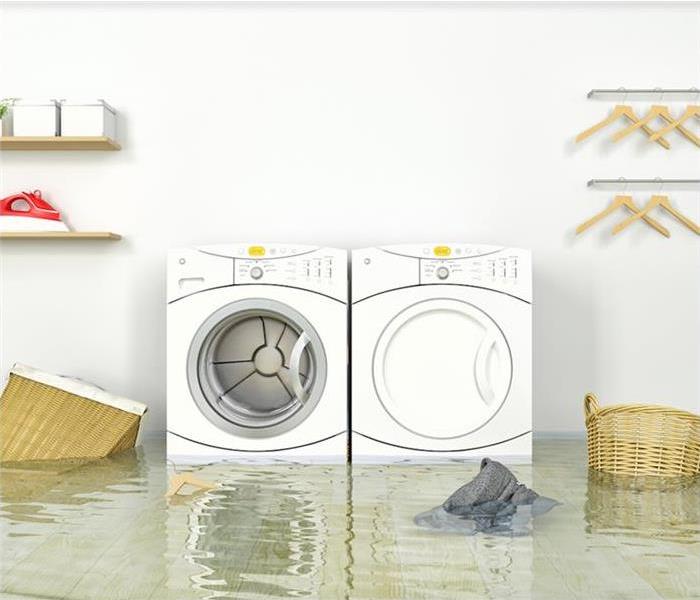Is Water Removal From Materials in Reading Challenging?
3/4/2022 (Permalink)
 Our technicians are skilled in effective water removal techniques. We are here 24/7 - 365 days a year to take your call.
Our technicians are skilled in effective water removal techniques. We are here 24/7 - 365 days a year to take your call.
With Several Tools and Devices for Extraction and Moisture Removal, Our SERVPRO Team can Efficiently Restore Many Damaged Reading Homes After a Disaster.
When many Reading homeowners consider water restoration obstacles after a disaster, standing water becomes the most glaring concern. As challenging as these aspects can be, especially without the efficient and powerful tools in the restoration and recovery arsenal of our SERVPRO team, water trapped in porous materials can often be more difficult to address. Several materials often quickly become exposed to moving water after a disaster, and depending on their porosity, they can begin absorbing moisture and direct water immediately.
Water removal in Reading homes is not a one-size-fits-all solution. Instead, each situation requires careful evaluations to determine the best machines and devices to overcome specific obstacles. With how quickly these conditions can change and worsen, this evaluation must occur as soon as possible to ensure that the appropriate extractors and water removal tools make it to the job site for use as soon as our technicians are ready for them. Absorbed water can most typically impact these types of materials in homes:
- Carpeting
- Wood Flooring
- Wall Systems
- Cabinetry and Vanities
How Can SERVPRO Overcome Saturated Carpets?
Carpets are a typical installation in area homes, making it a material that SERVPRO professionals anticipate in residential settings. Our extraction approaches vary slightly depending on the fiber count and thickness of the carpet itself, as short pile carpeting (glue down) absorbs less water than plusher options. The restoration of carpets to ultimately dry the flooring material typically requires a combination of several water removal tools exclusively designed for this softer flooring. Some of the standard devices and machines used in this process include:
- Carpet Wands – Wet vacuums and pumps are already a versatile implement of our extraction and water removal approach, so the inclusion of specialty attachments like carpet wands is an extension of their power and potential. These attachments are a focused vacuum head used on the surface of carpeting to pull the majority of moisture from the fibers and backing material.
- Weighted Extractors – When it is possible to protect the carpet, the padding, and the underlying material, it is critical to reducing these elements' oversaturation as soon as possible. The best approach for this is a weighted extraction option that utilizes a technician's weight on a stationary or ride-on unit. The heft of the machine and the operator press the carpet and padding against the subflooring to force moisture to the surface for removal.
- Floating – Once the majority of the moisture has gotten removed by weighted extraction, floating the carpet by placing a centrifugal air mover between the carpet and padding layers dry both materials simultaneously.
What Strategies Exist for Saturated Wood Flooring?
Wood flooring can often be one of the more considerable obstacles for drying technicians responding to your home's water disaster. Cellulose in the planks and panels of this type of material promotes a faster absorption rate despite any barrier that might initially exist with finished wood floorings such as lacquer, varnish, and polyurethane. Certain water removal practices and tools in Reading are ideal for restoring and protecting wood floors, including:
- Drying Mats – Mats slowly draw out moisture from exposed planks in a controlled manner, allowing for continual monitoring to prevent over-drying. Placing drying mats perpendicular to the planks' seams offers a greater drying area that ultimately requires less direct mat coverage.
- Tenting – To amplify this mat approach's effectiveness, we can use plastic sheeting anchored to dry portions of the flooring with tape or other weights to infuse the workspace with dry, warm air.
- Controlled Demolition – It is possible that there is no other suitable solution but to remove oversaturated materials. This controlled demolition process reduces wicking and absorption into neighboring planks.
Is Cabinetry Worth Protecting?
Fixtures like cabinets inside your kitchen and bathroom can often be heavily impacted by standing water, leaks, and high humidity. Particleboard is a standard material composition for these cabinets in most homes, which can be readily replaced rather than restored. The decision on whether a cabinet or vanity is worth the time to dry and restore comes down to information
collected about:
- Cost/Worth of Original Material
- Time to Dry
- Similar Material Availability
No matter how impacted your home might be by a water disaster, you can rely on the fast and knowledgeable response of our SERVPRO of Reading team to help. With our inventory of industry-leading equipment and evolving practices for efficient drying, we can work to protect as much of your home as possible after a loss. Give us a call at (610) 779-8189.






 24/7 Emergency Service
24/7 Emergency Service